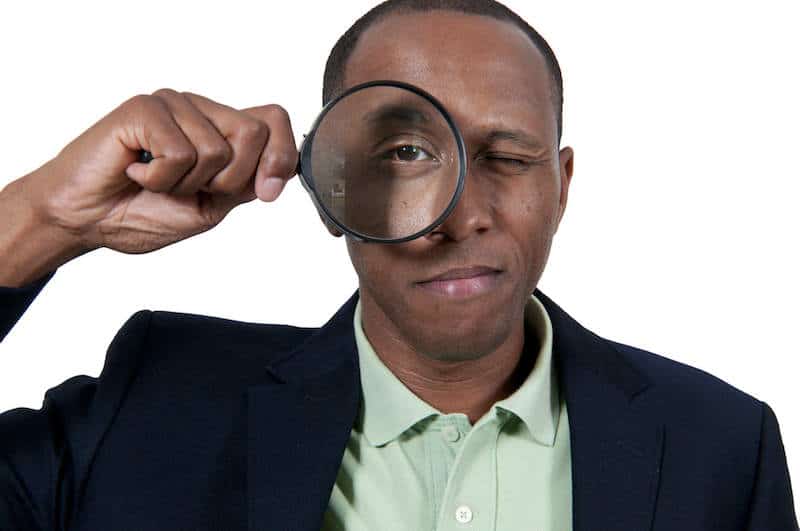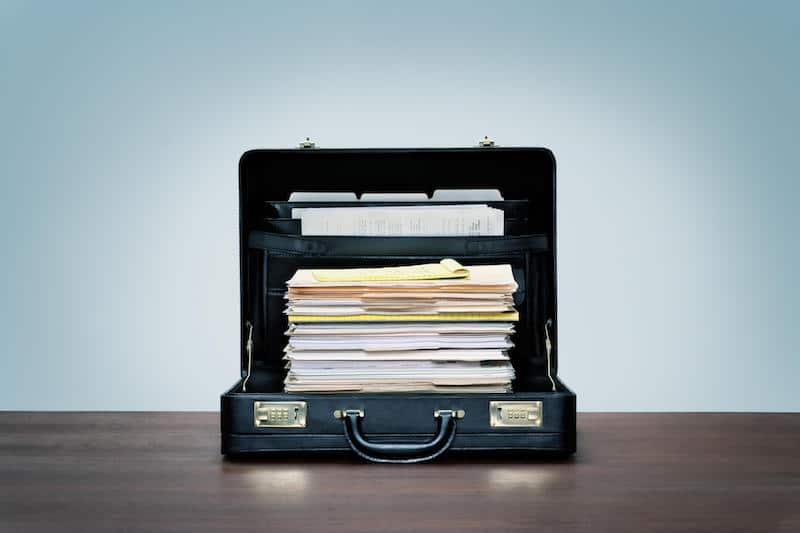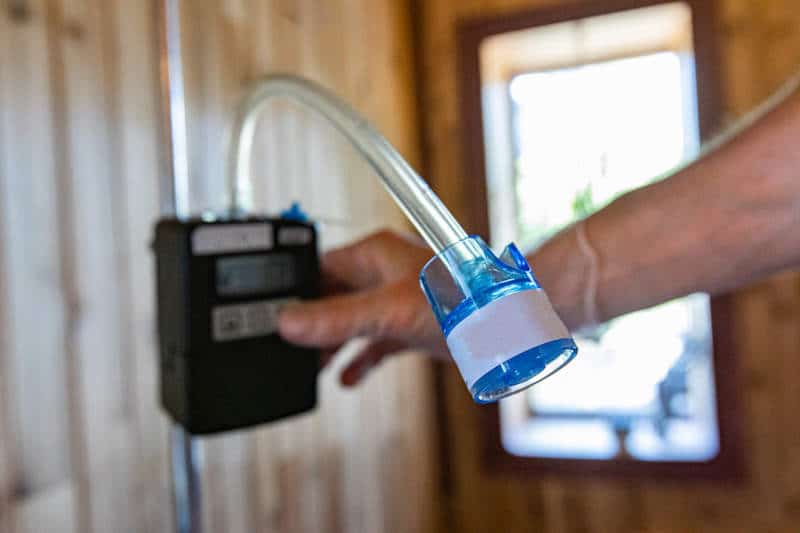No products in the cart.
Many individuals find or have found themselves in a moldy situation. It’s just one of those life occurrences that tie us all together. Whether you’re looking down at a visible colony, or you suspect there’s a hidden issue in the home, it’s one of those moments in life where you might be thinking, “What the heck do I do about this?” First things first, figure out the extent of the problem by hiring a professional. Knowing how to find a mold inspector, a qualified one, is key to helping ensure a safe home environment.

Remediation plays a starring role in kicking mold out of a home, but this process won’t be successful unless they have the information necessary to remove the contamination. That’s where a mold inspector comes in. Unfortunately, though, not all mold inspectors are created equal. Misinformation and lack of understanding in society and related industries play a huge role.
Here’s how to find a mold inspector, why you need the best of the best, and what you should expect from these home health champions.
WHAT DOES A MOLD INSPECTOR DO?
A mold inspector is like an interpreter for your home. They are also the front line for battling all things moldy. By collecting data and taking a deep and thorough look inside the building, they’re able to paint a picture of what’s going on within those walls (sometimes literally within the wall). They’ll pinpoint issues such as if there’s mold growth, which areas are hot zones, and the seriousness of the contamination level.
All of the data they collect helps remediation teams in their ability to get rid of the contamination problem. Without that extensive data, the chances of a failed remediation protocol skyrocket. Essentially, a mold inspector’s job is to figure out the status of the indoor environment so that a plan can be made to completely and properly handle the situation. Inaccurate or missing data can lead to some contaminants being left behind, or other hidden problems remaining undisturbed within the home.

Either scenario is one we want to avoid. Not only will the inspection be a waste of money, but it also sets the remediation protocol up to fail. Ineffective remediation leads to continued exposure and a poor living environment that can negatively affect the health of those spending time inside. That’s why it’s important to find the right individual for the job.
WHAT EXACTLY ARE THESE CONTAMINANTS?
Understanding the importance of creating an accurate snapshot of the contaminated indoor environment involves a solid foundation of mold awareness. Let’s dive into the moldy cliff notes.
All 100,000 species of mold reproduce by creating microscopic spores and releasing them into the air.¹’² Due to their tiny size, these spores ride the air current to wherever that may lead, whether out in nature or straight through your front door. Like seeds, these spores will remain in spore-form until they land on a nice, habitable surface.
Being the hardy fungus that it is, mold spores typically only need two main components for growth are moisture and food. Given these components, they only need 24-48 hours to put down roots called hyphae and transition into the land of the living.³ In nature, this isn’t a problem. Mold actually plays a huge role in decomposition. In our indoor environments, however, it’s a bit of a different story.
MOLD IN A HOME
With nature being so vast, mold spores have tons of room to spread out and fly wherever the breeze takes them. When a mold colony takes root in a home, though, these particles can’t disperse. Homes nowadays are built with energy efficiency in mind, leading to little airflow between the air inside and outside of the home. This means that all of the spores created by the growing mold colony remain trapped within the walls of the building.
SUCH A SCENARIO IS BAD NEWS FOR A FEW REASONS:
- Indoor air quality decreases drastically
- The chances of a spore opportunistically finding another place to grow skyrockets
- All surfaces within the home can become contaminated
- Exposure to a high level of foreign particles increases
Essentially, a home acts like a bubble, trapping the particles inside and creating a contamination nightmare. To make matters worse, some species of mold produce microscopic toxins called mycotoxins when they feel threatened, which add to the particulate matter already existing inside.⁴ These particles are also naturally toxic to the human body, which is why the FDA regulates them in food products.⁵
Understanding this clears up a few of the popular misconceptions heard while dealing with mold problems, particularly while figuring out how to find a mold inspector.

ERROR 1: MOLD IS EVERYWHERE, SO MOLD GROWTH IN A HOME IS INEVITABLE.
Mold only grows where the conditions are right. If food and moisture aren’t present, then this fungus won’t get the opportunity to colonize inside a home. Sometimes, though, random situations allow for growth. In this instance, it needs to be remediated properly and quickly to reduce contamination.
ERROR 2: SINCE MOLD PARTICLES ARE ALL OVER THE PLACE, EXPOSURE TO THEM CAN’T CAUSE ANY HARM.
Yes, you’re exposed to a few mold particles throughout the day. The key distinction, though, is that it’s only a few. Mold growth in a home creates a greater level of exposure because there’s a much higher volume of particles in a smaller area. Picture yourself standing inside of a snowglobe and you’ve got the right idea, except your standing in mold, not snow. It’s bad news for the health of those spending time inside.
THE BIG DEAL WITH EXPOSURE AND WHY YOU NEED TO KNOW HOW TO FIND A MOLD INSPECTOR
The reason a mold inspector’s job is so important is that continued exposure to these particles and toxins can wreak havoc on our bodies. The particles we’re talking about are teeny tiny, so small that they’re inhalable, which is why the EPA considers them particulate matter.
PARTICULATE MATTER IS BROKEN DOWN INTO TWO GROUPS:⁶
- PM10: particles that have a diameter of around 10 micrometers or less.
- PM2.5: fine particles that have a diameter of around 2.5 micrometers or less.
As mycotoxins are around 0.1 microns and mold spores range from 1-20 microns, they fall right into this harmful category.
Encountering a few mold spores or mycotoxins throughout the day triggers the body to deploy the immune system to get the foreign particles out ASAP. Typically, this causes no issues. The problem arises when the immune system isn’t facing a few particles throughout the day but an entire army of them. That’s quite a big task and can lead to the immune system getting overrun and malfunctioning. An immune system on the fritz can trigger symptoms and leave the door open for other autoimmune conditions to take hold, such as Lyme disease and Candida.

SOME SYMPTOMS OF MOLD EXPOSURE INCLUDE:
- Hair loss
- Digestive issues
- Coughing
- Watery eyes
- Neurological problems
- Runny nose
- Brain fog
- Rashes
- Chronic fatigue
- Respiratory issues
No two exposure experiences are the same, though. Factors such as genetics, species of mold, immune system status, presence of other contaminants, and volume of particles all play a role. ⁷’⁸’⁹’¹⁰’¹¹ One individual may have the occasional cough, and another may develop a series of crippling symptoms.
Considering the average person breathes in an average of 20,000 breaths a day, it kind of makes sense why living in a moldy home can cause so many health issues.¹² Hence why knowing how to find a mold inspector and what to expect from them is important. They’ll be able to tell you what the situation is and provide the information needed to get rid of it.
HOW TO FIND A MOLD INSPECTOR
Trying to figure out how to find a mold inspector can seem like finding a needle in a haystack. I personally have quite a few favorite professionals that my company and I have worked with over the years who provide excellent services. Here’s a list with an interactive map based on particular areas across the United States.

That being said, the right individual for the job should tick a few boxes, which is why the individuals mentioned above are at the top of my recommendation list. They should prioritize your health above all, understand the importance of painting a thorough and accurate picture, and know how to properly assess your home.
When looking for an inspector, don’t be afraid to ask questions about their experience. What’s their track record, what training have they had, what’s their process, what tests will they run, and do they have any limitations?
You want someone qualified to test your home; otherwise, mistakes could be made and you and your family will be stuck living in an environment that’s still contaminated.
No one wants to waste time and money hiring someone that isn’t right for the job and then be forced to remain in an unsafe environment.
Pricing might also seem like a huge determinant factor, but going with the “cheaper option” often leads to gaps in the testing results. Lower pricing often means less testing, less time, and less consideration for finding the answers you need. Thoroughness is the name of the game when it comes to remediating mold from the home.
HOW DOES A MOLD INSPECTOR CHECK FOR MOLD?
Figuring out how to find a mold inspector involves knowing what they should be doing in the first place. A proper inspection should then take a few hours and use a variety of methodologies.
SOME OF THE TESTING DATA YOU SHOULD EXPECT TO SEE IS:
- Species of mold present
- Quantities of each mold
- Potential spore presence in the HVAC system
- Presence of mycotoxins
- Presence of bacteria

All of this information is needed to understand what’s actually existing in the home. If other contaminants such as mycotoxins and bacteria are present, the remediation protocol will need to address this. Should spores make their way into the HVAC, this will need to be addressed. Otherwise, those particles will blow all over the home and could turn into a new mold colony.
Successful remediation requires every piece of the puzzle in order to fit together correctly and decontaminate a home.
YOU KNOW HOW TO FIND A MOLD INSPECTOR. NOW WHAT?
Knowing who to hire for a mold inspection sets up an excellent foundation for remediation that works. After this person comes in and collects data, your next step is to find a remediation team to come in and get rid of that contamination. Like mold inspectors, though, not all remediation teams are built the same.
Again, you want a company that prioritizes your health, understands the importance of creating a safe environment, and has a plan in place to properly remediate the space. Make sure to ask as many questions as possible to thoroughly assess whether or not they can do the job and do it correctly. Do they have experience? Are they confident they can remove mycotoxins? What’s their success rate like? What’s their plan for your home?

At heart, a remediation team bent on success should always adhere to three pillars for success.
THESE THREE PILLARS ARE:
- Remediate the sources properly.
- Identify and address the problems that led to those sources in the first place.
- Eradicate all contamination created by those sources, including toxins and bacteria.
Failure to hit every point can lead to mold growth that comes back or contamination remaining when the remediation team leaves. Either situation is a failed remediation.
Gathering this information will not only give you peace of mind knowing that they’ll do everything in their power to remediate your home, but you’ll also know that they’re in your corner fighting for a healthy home. When it comes to dealing with mold, that’s one of the most important things to winning the battle and getting rid of this fungus among us.
SIFTING THROUGH THE CHAOS
The world of mold has been a bit topsy-turvy for a while now. Between the lack of discussion, the need for more information, and the volume of misconceptions, it’s a bit of a mess. That can lead to you feeling overwhelmed and at a loss as to what steps you should take to handle any type of indoor mold situation.

Having a basic understanding of mold and knowing how to find a good mold inspector is an amazing first step towards solving any problem, whether you’re dealing with mold now or just want to prepare for any issue in the future. This will set you up for success in making sure your home environment is safe for you and your family.
At the end of the day, that’s what matters, especially with how much time we spend in our homes. If these spaces aren’t safe, or if the air quality is poor, our health will reflect that.
Health begins at home.™
Still Have Questions?
A member of our team is here to help! Click on “Get Started ➤” below to book a consultation with a member of the HOMECLEANSE team. We have a few quick questions that will help us put together a roadmap to solve or prevent all of your mold problems.
Two minutes of your time could lead to better health for you and your family.
- Environmental Protection Agency. (n.d.). Mold. EPA. Retrieved from https://www.epa.gov/mold.
- Centers for Disease Control and Prevention. Basic facts about mold and dampness. Centers for Disease Control and Prevention. Retrieved from https://www.cdc.gov/mold/faqs.htm.
- Lstiburek, J., Brennan, T., & Yost, N. (2002, January 15). Rr-0208: What you need to know about mold. Building Science Corporation. Retrieved from, https://www.buildingscience.com/documents/reports/rr-0208-what-you-need-to-know-about-mold/view.
- World Health Organization. (n.d.). Mycotoxins. World Health Organization. Retrieved from https://www.who.int/news-room/fact-sheets/detail/mycotoxins.
- FDA. (2016, September 30). Food and Drug Administration COMPLIANCE PROGRAM GUIDANCE MANUAL. Food and Drug Administration. Retrieved from https://www.fda.gov/media/140749/download
- EPA. (n.d.). Health and Environmental Effects of Particulate Matter (PM). EPA. Retrieved October 8, 2021, from https://www.epa.gov/pm-pollution/health-and-environmental-effects-particulate-matter-pm.
- Environmental and Occupational Health Assessment Program, & Environmental and Occupational Health Assessment Program, & Health Science Section, Mold Basics for Primary Care Clinicians (2009). Hartford, CT; Connecticut Department of Public Health. , H. S. S., Mold Basics for Primary Care Clinicians 1–10 (2009). Hartford, CT; Connecticut Department of Public Health.
- Curtis, L., Lieberman, A., Stark, M., Rea, W., & Vetter, M. (2004). Adverse health effects of indoor molds. Journal of Nutritional & Environmental Medicine, 14(3), 261-274.
- Bush, R. K., Portnoy, J. M., Saxon, A., Terr, A. I., & Wood, R. A. (2006). The medical effects of mold exposure. Journal of Allergy and Clinical Immunology, 117(2), 326-333
- Fisk, W. J., Lei-Gomez, Q., & Mendell, M. J. (2007). Meta-analyses of the associations of respiratory health effects with dampness and mold in homes. Indoor air, 17(4), 284-296.
- Wild, C. P., & Gong, Y. Y. (2010). Mycotoxins and human disease: a largely ignored global health issue. Carcinogenesis, 31(1), 71-82.
- Brown, A. (2014, April 28). How Many Breaths Do You Take Each Day? [web log]. Retrieved from How Many Breaths Do You Take Each Day?
